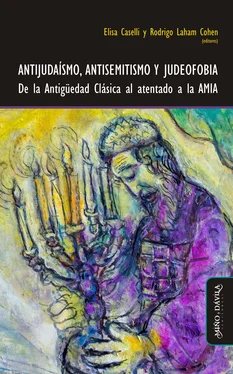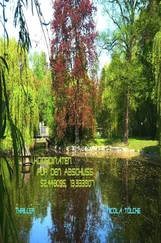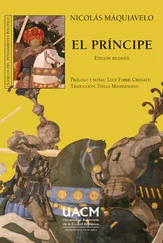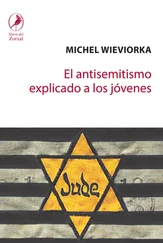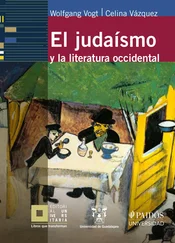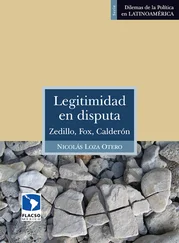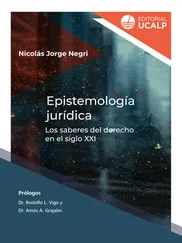1 ...6 7 8 10 11 12 ...17 Gambetti, S. (2008). “In Defense of a Historical Reading of P. Yale II 107 = P. Giss. Lit. 4.7”, Zeitschrift für Papyrologie und Epigraphik, 165, 191-208.
Gambetti, S. (2009). The Alexandrian Riots of 38 C.E. and the Persecution of the Jews. A Historical Reconstruction. Supplements to the Journal for the Study of Judaism 135, Leiden-Boston.
Goodenough, E.R. (1926). “Philo and Public Life”, Journal of Egyptian Archaeology, 12, 77-79.
Gruen, E.S. (2004). Diaspora: Jews Amidst Greeks and Romans, Cambridge, Londres.
Harker, A. (2008). Loyalty and Dissidence in Roman Egypt. The Case of the Acta Alexandrinorum, Cambridge.
Helm, R. (1956 [1913]). Eusebius Werke 7: Die Chronik des Hieronymus, Berlin.
Hombert, M. y Préaux, C. (1952). Recherches sur le recensement dans l’Égypte romaine (P. Bruxelles inv. E. 7616), Leiden.
Honigman, S. (2003). “Politeumata and Ethnicity in Ptolemaic Egypt”, Ancient Society, 33, 61-102.
Honigman, S. (2016). “The Ptolemaic and Roman Definitions of Social Categories and the Evolution of Judean Communal Identity in Egypt”, en Y. Furstenberg (ed.), Jewish and Christian Communal Identities in the Roman World, Leiden-Boston, 23-74.
Hunt, A. S. (ed.) (1911). The Oxyrhynchus Papyri, VIII, Londres.
Jay, J. (2018). “Spectacle, Stage-Craft, and the Tragic in Philo’s In Flaccum: A Literary-Historical Analysis”, Journal of Ancient Judaism, 8, 222–240.
Kasher, A. (1985). The Jews in Hellenistic and Roman Egypt: The Struggle for Equal Rights, Tübingen.
Kerkeslager, A. (2005). “The absence of Dionysios, Lampo, and Isidoros from the Violence in Alexandria in 38 C.E.”, The Studia Philonica Annual, XVII, 49-94.
Lémonon, J.-P. (1981). Pilate et le gouvernement de la Judée. Textes et monuments, Paris.
Lewis, N. (1983). Life in Egypt under Roman Rule, Oxford.
Lüderitz, G. (1994). “What is the Politeuma?”, en W. van Henten y P. W. van der Horst (eds.), Studies in Early Jewish Epigraphy, Leiden, 183-225.
Maier, P.L. (1968). “Sejanus, Pilate and the date of the Crucifixion”, Church History, 37, 3-13.
Martín, J. P. (ed.) (2009). “Introducción general”, en Obras Completas de Filón de Alejandría, I, Madrid, 9-91.
Martín, J. P. (ed.) (2016). “Presentación”, en Obras Completas de Filón de Alejandría, IV, Madrid, 9-13.
Massebieau, L. (1889). Le classement des oeuvres de Philon, Paris.
Meiser, M. (1999). “Gattung, Adressaten und Intention von Philos In Flaccum”, Journal for the Study of Judaism, 30, 420-421.
Mitteis, L. y Wilcken, U. (1912). Grundzüge und Chrestomathie der Papyrus, Leipzig, Berlín.
Morris, J. (1987 [1885]). “The Jewish Philosopher Philo”, en Schürer, E. (ed.). History of the Jewish People in the Age of Jesus Christ, (rev. ed. by G. Vermes, M. Goodman & F. Millar), Edimburgo, 809-889.
Niehoff, M. R. (2011). “Philo’s Exposition in a Roman Context”, The Studia Philonica Annual, 23, 1–21.
Niehoff, M. R. (2018). Philo of Alexandria: An Intellectual Biography, Yale University Press.Pelletier, A. (1967). Contre Flaccus, Paris.
Roux, J. y Roux, G. (1949). “Un décret du politeuma des Juifs de Bérénikè en Cyrénaique au museé lapidaire de Carpentras”, Revue des Études Grecques, 62, 281-296.
Royse, J. R. (1991). The Spurious Texts of Philo of Alexandria: A Study of Textual Transmission and Corruption with Indexes to the Major Collections of Greek Fragments, Leiden.
Sandmel, S. (1981). “Philo Judaeus: An introduction to the Man, his writings and his significance”, ANRW, II, 21/1.2, 3-46.
Sänger. P. (2019). Die ptolemäische Organisationsform politeuma. Ein Herrschaftsinstrument zugunsten jüdischer und anderer hellenischer Gemeinschaften, Tübingen.
Schwartz, D. R. (2016). “Rome and Alexandria: Why was there no Jewish Politeuma in Rome?”, en Y. Furstenberg (ed.), Jewish and Christian Communal Identities in the Roman World, Leiden-Boston, 153-166.
Smallwood, M. (1976). The Jews under Roman Rule: from Pompey to Diocletian, Leiden.
Smallwood, M. (1970). Philonis Alexandrini Legatio ad Gaium, Leiden.
Stephens, S. A. (1985). Yale Papyri in the Beinecke Rare Book and Manuscript Library, Chico.
Taubenschlag, R. (1955). The Law of Greco-Roman Egypt in the Light of the Papyri, 332 B.C.-640 A.D., Varsovia.
Tcherikover, V. A. y Fuks, A. (1957-1960), Corpus Papyrorum Judaicarum, I-II, Cambridge (= CPJ).
Torallas Tovar, S. (2009). “Contra Flaco. Embajada a Gayo”, en J. P. Martín (ed.), Obras Completas de Filón de Alejandría, V, Madrid, 177-301.
Van der Horst, P. W. (2003). Philo of Alexandria. Philo’s Flaccus. The First Pogrom, Leiden.
Von Premerstein, A. (1923). Zu den sogenannten alexandrinischen Märtyrerakten, Leipzig.
Von Premerstein, A. (1939). Alexandrinische Geronten vor Kaiser Gaius, Giessen.
Yoder, J. (2014). Representatives of Roman Rule: Roman Provincial Governors in Luke-Acts, Berlin, Munich, Boston.
Capítulo II
Un dios, un texto y el conflicto por la interpretación: judíos y cristianos en la Antigüedad Tardía
Rodrigo Laham Cohen
(UBA / IMHICIHU-CONICET / UNSAM)
¿Es posible decir “Jesús es el Mesías” sin, implícita o explícitamente, decir al mismo tiempo “y los judíos sean malditos”?78.
Introducción
La pregunta que Rosemary Radford Ruether se formuló en 1974 era incómoda. Lo era para el mundo académico. Pero era más inquietante para quienes, desde el judaísmo y el cristianismo, intentaban entablar diálogo luego de siglos de tensiones y violencias. Ruether, teóloga, no estaba intentando cuestionar tales acercamientos; todo lo contrario. Su libro Faith and Fratricide: The Theological Roots of Anti-Semitism (Fe y fratricidio: Las raíces teológicas del antisemitismo) aspiraba, como veremos más adelante, a comprender las razones por las cuales la mayoría de los hombres de Iglesia durante la Antigüedad Tardía, el Medioevo e, incluso, más allá, habían hecho correr ríos de tinta contra los judíos y las judías.
La vinculación entre odio a los judíos y cristianismo había sido resaltada en el mundo académico, años antes, por Jules Isaac79. El historiador francés, que había perdido a su esposa y a su hija en la Shoa, había comenzado a indagar la relación entre cristianismo y antisemitismo durante su dramático derrotero en la Segunda Guerra Mundial. Isaac no presentaba textos cargados de odio. Fomentaba los vínculos entre judíos y cristianos y, en virtud de ello, exploraba qué parte del discurso cristiano contenía, en su lógica, los núcleos antijudaicos más perniciosos.
Como ya he sostenido en otros trabajos (Laham Cohen, 2016; 2019a; en prensa) y como hemos anticipado en la introducción de este libro, no creo que exista un lazo directo entre antijudaísmo cristiano, antisemitismo y Shoa. Desde ya que no son fenómenos absolutamente disociados pero no se los puede relacionar de manera automática. Ni en las cartas de Pablo de Tarso hay una semilla que inexorablemente lleve a las matanzas de judíos y judías durante la Primera Cruzada; ni en el tratado Contra judíos de Agustín se anticipa la Shoa. No niego que ciertos antisemitismos modernos apelen a tópicos constituidos en el cristianismo para completar su repertorio de acusaciones, pero equiparar a Juan Crisóstomo con Hitler por el mero hecho de que ambos rechazan a los judíos es una actitud fuertemente ahistórica.
En la misma línea –de esto también hablamos en la introducción– emplearé el término antijudaísmo porque apelar a antisemitismo implicaría una equiparación entre fenómenos de temporalidad y características diferentes (Laham Cohen, 2016). Como se ve en este mismo libro, sin embargo, el uso del concepto antisemitismo sigue siendo un aspecto en disputa.
Читать дальше
